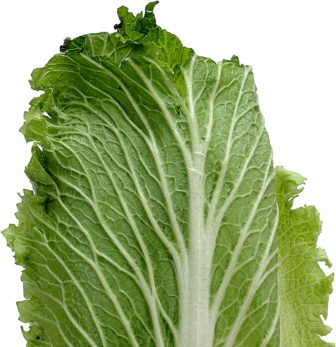
On Nov. 20, the U.S. Food and Drug Administration announced that it is investigating a new outbreak of E. coli in romaine lettuce. Here is the press release verbatim:
FDA Fast Facts: FDA, CDC and partners investigate new E. coli O157:H7 outbreak, urge consumers to avoid romaine lettuce
For Immediate Release: November 20, 2018
Media Inquiries: Peter Cassell, 240-402-6537, [email protected]
Consumer Inquiries: 888-INFO-FDA
The U.S. Food and Drug Administration, the Centers for Disease Control and Prevention (CDC), along with state and local partners, are investigating a multistate outbreak of E. coli O157:H7 likely linked to romaine lettuce. At this time, the FDA recommends that consumers do not eat romaine lettuce and discard any product until we know more. Retailers, restaurants and other food service operators should not serve romaine lettuce until more is known about this outbreak. If consumers are experiencing symptoms of an E. coli O157:H7 infection, they should immediately seek the care of a health care professional.
Federal health officials are working on gathering information and tracing back romaine lettuce reportedly consumed by people located in various parts of the country who became ill with E. coli O157:H7 to determine the source of contamination. U.S. agencies are also coordinating with the Public Health Agency of Canada (PHAC), which is also investigating a similar outbreak in Canada and providing similar advice to Canadian consumers. While the strain of E. coli O157:H7 seen in this outbreak is different than the one identified in the large outbreak in Spring 2018 linked to romaine from the Yuma growing region, it does appear to be similar to the strain that caused a smaller outbreak linked to leafy greens that occurred in the fall of 2017 in both the U.S. and Canada. Since these prior outbreaks were identified, the FDA has been working closely with the leafy greens industry and other state and federal partners to implement safety practices that can help further reduce the risk of these types of outbreaks. As a direct response to the outbreaks we have seen, the agency will also begin a special effort to sample and test romaine lettuce for contamination throughout the market.
“The quick and aggressive steps we’re taking today are aimed at making sure we get ahead of this emerging outbreak, to reduce risk to consumers, and to help people protect themselves and their families from this foodborne illness outbreak. This is especially important ahead of the Thanksgiving holiday, when people will be sitting down for family meals. We want to get this information out to consumers early. While we’ve made progress, it’s still early in this investigation and work remains to pinpoint the source of contamination that contributed to this outbreak and allow us to employ more targeted measures to reduce future risk,” said FDA Commissioner Scott Gottlieb, M.D. “While we don’t have enough traceback information to request a recall from specific suppliers, we’re working to prevent unnecessary foodborne illness. Consumers can avoid eating and discard any romaine lettuce. Industry can also contribute greatly to containing and stopping this outbreak by voluntarily withdrawing any romaine products from the market and by withholding the distribution of romaine until we can ensure the outbreak is over or we can identify a specific source of contamination. This isn’t the first romaine outbreak we have seen in the recent past, and we will continue to take steps to identify the root causes of these events and take action to prevent future outbreaks. We’re committed to working with our partners to implement additional safety practices so that we’ll be better positioned to prevent outbreaks like this from occurring. In the meantime, we’ll continue to take action around this outbreak to help protect American consumers from eating potentially contaminated romaine lettuce as our current investigation unfolds.”
The following is an update on the outbreak investigation.
| Snapshots | By the Numbers (as of 11/20/2018) |
| Outbreak Investigation Summary | Outbreak Investigation |
Advice for Consumers
|
|
The FDA is continuing to investigate this outbreak and will share more information as it becomes available. For more information on this investigation:
- FDA’s E. coli Outbreak Investigation
- CDC’s Multistate Outbreak Investigation of E. coli O157:H7 Infections
- Canada’s Outbreak Investigation of E. coli O157:H7 Infections
- Statement from the Commissioner on the Use of Technology for Food Safety
- Statement from the Commissioner on the Yuma Environmental Assessment
- Yuma Environmental Assessment for Romaine Linked E. coli Outbreak
- Foodsafety.gov On Food Poisoning – E. coli
- CDC E. coli Homepage
Comment